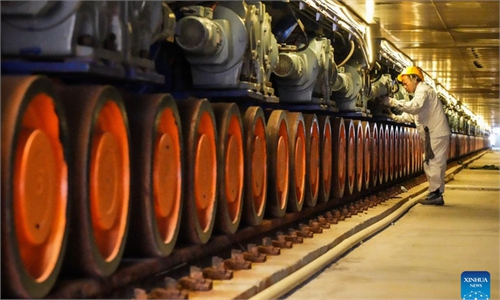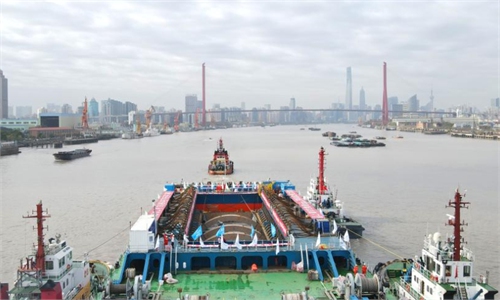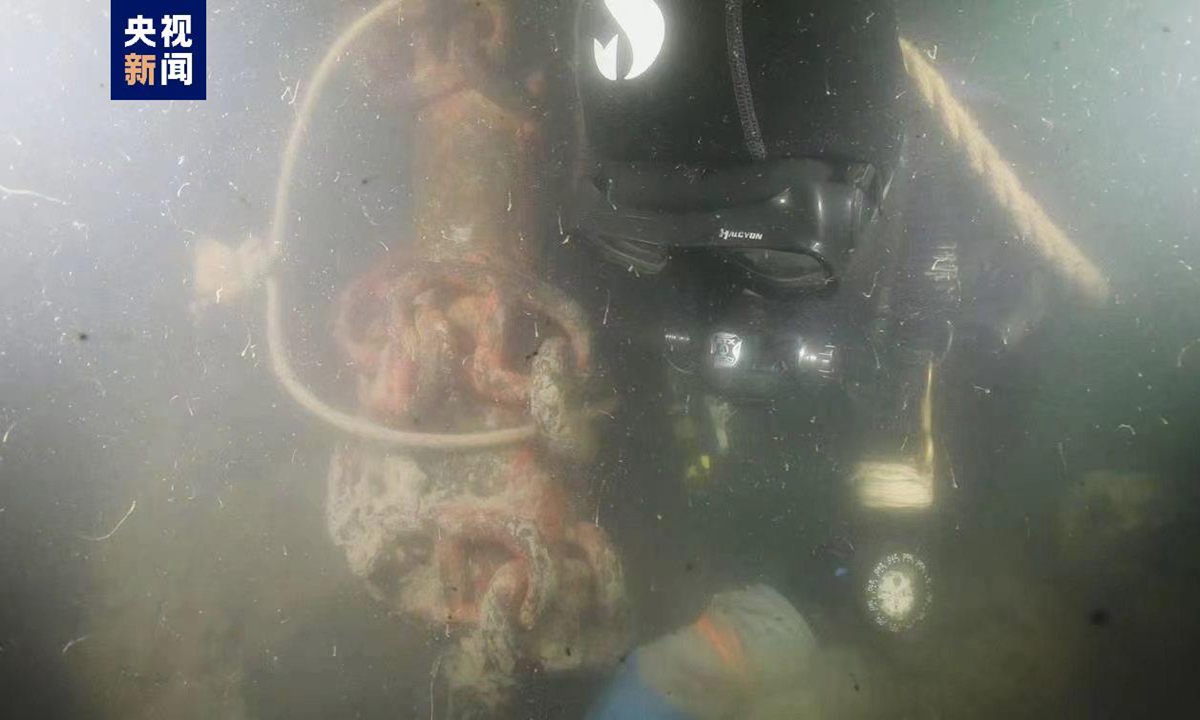
Archaeolgists are underwater to find relics of the ship wreckage named Jing Yuan sunk in the First Sino-Japanese War (1894-95) during the Qing Dynasty (1644-1911) off the coast of Weihai, East China's Shandong Province, reported China's Central Television on March 4, 2023. Photo: Screenshot from online
Archaeologists recently discovered ammunition including a 210-millimeter shell from the wreckage of a ship sunk in the First Sino-Japanese War (1894-95) during the Qing Dynasty (1644-1911).
The 400-square-meter excavation was conducted in autumn last year on the wreck, which is off the coast of Weihai, East China's Shandong Province. The archaeologists found a total of 201 relics. They included copper-made daily necessities, some iron and wooden components of the ship body, and rubber insoles and mattresses.
The ship, named Jing Yuan, had a boiler compartment, a bow ammunition compartment, stern ammunition compartment, and other areas that have not yet been explored.
Among the relics, experts recognized two boxes of Hotchkiss 37 mm bullets, the first time these have been discovered in China, and one 210-mm Krupp shell, the largest ever found in Chinese underwater archaeology.
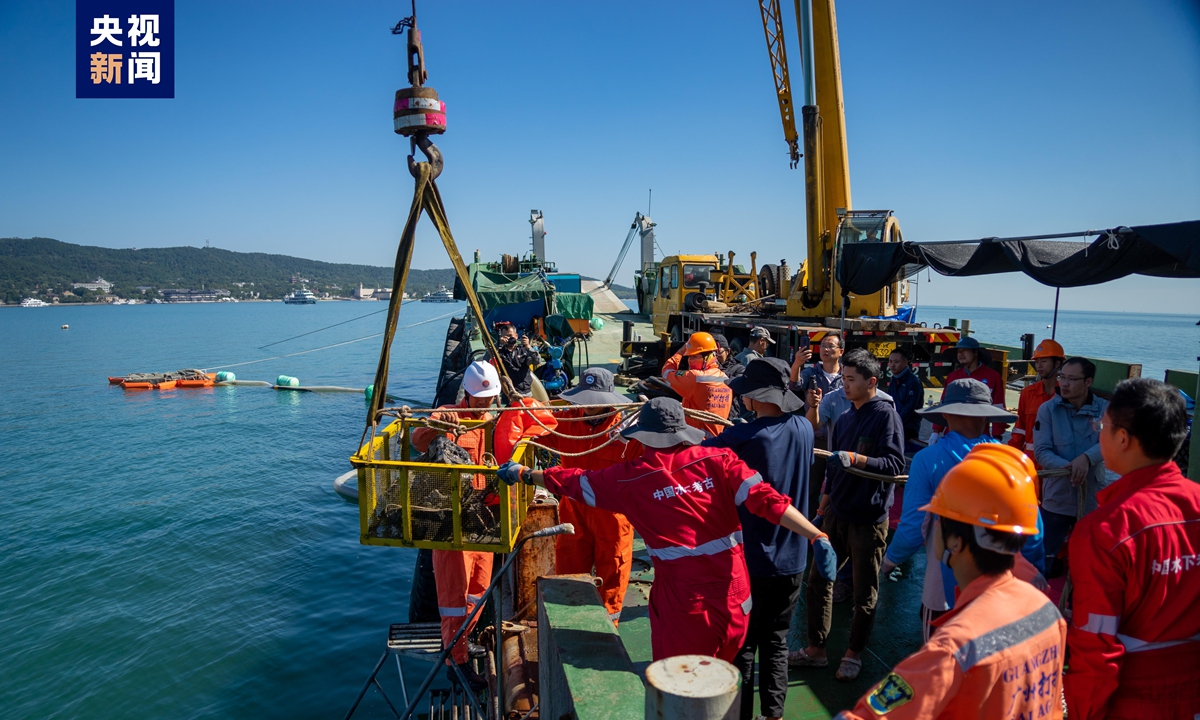
Relics of the ship wreckage named Jing Yuan sunk in the First Sino-Japanese War (1894-95) during the Qing Dynasty (1644-1911) off the coast of Weihai, East China's Shandong Province, were found by archaeologists, reported China's Central Television on March 4, 2023. Photo: Screenshot from online
Located 1.1 kilometers off Weihai Bay, the wreck of the Jing Yuan has been completely buried 1.2 to 2.4 meters under the seabed mud, and the ruins are spread across an area of 850 square meters.
Experts say that the discoveries have corrected some ideas about the Beiyang Fleet, which was set up in 1888 on Liugong Island in Shandong to resist invasion by the Japanese navy.
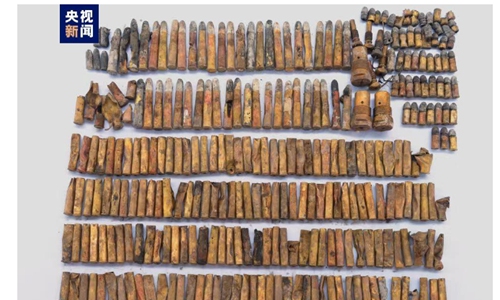
Ammunition from the ship wreckage named Jing Yuan sunk in the First Sino-Japanese War (1894-95) during the Qing Dynasty (1644-1911) off the coast of Weihai, East China's Shandong Province, reported China's Central Television on March 4, 2023. Photo: Screenshot from online
"We tended to have rumors that a lot of shells had sand mixed in, which undermined the defense capability of the fleet," said Wang Zebing, a member of the Shandong Underwater Archeology Team and head of Jing Yuan excavation team, on Saturday.
"But based on the massive shells we found at the site, there was in fact a round of intense counterattacks from our fleet during the war at that time," Wang noted. "The ammunition they used was advanced in fact."
Wang told the Global Times on Tuesday that the Krupp shell discovered this time "is a complete shell that has not been used yet." As a cruiser customized from the UK at that time, such 210-millimeter shells were commonly used by the Jing Yuan ship at that time.
"There was another ship customized from the UK together with the Jing Yuan, and the shells used on that ship were 305 millimeters," added Wang.
"We found this shell during the sand pumping process. After it was salvaged through the lifting belt, it was placed in the laboratory for further study," noted Wang.
Buried in the sea mud for over a century, relics on a shipwreck can be subjected to various destructive factors such as erosion by currents and seabed organisms. The corrosion of the copper shell may be intensified after being exposed to the air.
Historical records show that in 1886, the Qing government ordered two dome-clad cruisers from the Armstrong Shipyard of the UK, one of which was the Jing Yuan. The other ship was the Zhi Yuan, which was discovered in 2015 in the Huanghai Sea off Northwest China's Liaoning Province.
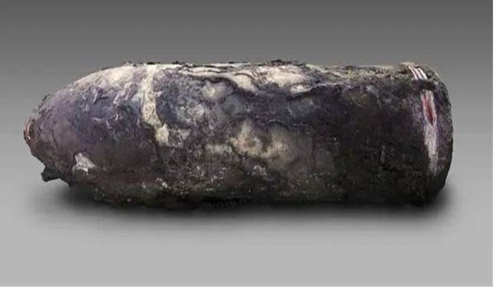
A 210-millimeter shell from the ship wreckage named Jing Yuan sunk in the First Sino-Japanese War (1894-95) during the Qing Dynasty (1644-1911) off the coast of Weihai, East China's Shandong Province, reported China's Central Television on March 4, 2023. Photo: Screenshot from online
"Generally speaking, the archaeological work near Weihai Bay lasts for about two months from mid-July to mid-September, so the work plan for each period will be determined every year prior to that time," noted Wang. "After September, the water will become colder, making it inconvenient to carry out underwater archaeological work."The work was launched jointly by Provincial Underwater Archaeological Research Center and Archaeological Research Center of The National Cultural Heritage Administration, together with Weihai Museum, to explore the sunken cruisers from the First Sino-Japanese War.
Wang told the Global Times that their next mission is to locate the wreckage of another ship from the war, called Lai Yuan.
In 1887, the Lai Yuan cruiser joined Beiyang Fleet after it was built in Vulkan shipyard in Germany.
It fought against the Japanese invasion on the Yellow Sea in 1894 and then joined the battle at Weihai Bay before being attacked by a Japanese fleet.
"We now identified the general location of Lai Yuan off the coast of Weihai, and will initiate our mission this summer. It is speculated that the ship is buried 60 centimeters under the sea mud," noted Wang.
